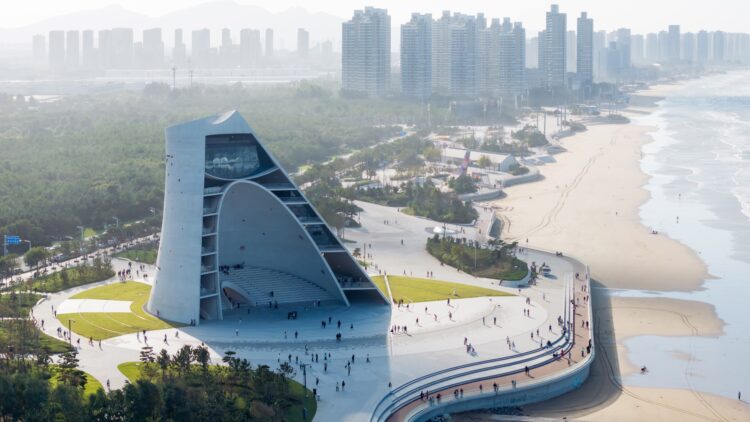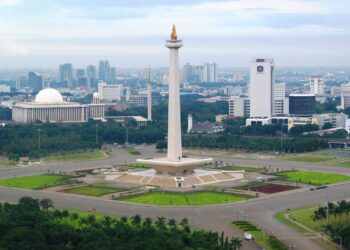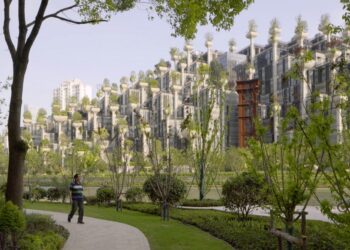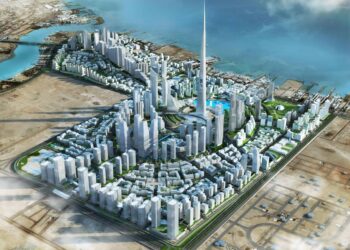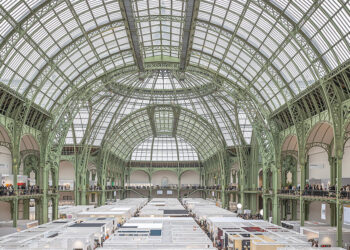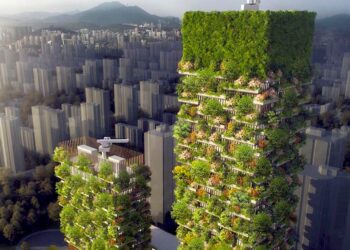Nestled along the picturesque coastline of Yantai, China, the Sun Tower stands as a testament to the seamless integration of architecture, nature, and cultural heritage. Designed by OPEN Architecture, this 50-meter-tall conical structure transcends traditional architectural norms, serving as a cultural beacon that honors ancient sun-worship practices while embracing modern sustainability principles. The tower’s unique design and orientation not only pay homage to celestial movements but also foster a profound connection between visitors and the natural world.
Architectural Inspiration and Design
The Sun Tower’s conception draws heavily from Yantai’s rich history of sun worship and the traditional watchtowers of the Ming Dynasty. OPEN Architecture envisioned a structure that encapsulates the spiritual essence of the sun, crafting a modern-day “cultural lighthouse” that guides both the mind and soul. The tower’s asymmetrical conical form, appearing as if sliced open, reveals its intricate inner workings and invites exploration. This design choice not only enhances aesthetic appeal but also symbolizes transparency and openness to the natural elements.
Celestial Alignment and Symbolism
A defining feature of the Sun Tower is its meticulous alignment with celestial events:
-
A. The northern edge aligns with the noon sun during the equinoxes, allowing sunlight to penetrate the structure in a precise manner.
-
B. The entrance tunnel is oriented to capture the sunset on the winter solstice, creating a pathway illuminated by the setting sun.
-
C. The outdoor theater’s axis points directly toward the sunrise over Zhifu Island on the summer solstice, establishing a direct visual connection with this significant event.
These alignments transform the building into a functional sundial, marking the passage of time and seasons, and reinforcing the deep-rooted connection between humanity and the cosmos.
Structural Composition and Materials
Constructed in collaboration with engineering firm Arup, the Sun Tower features a dual-layered shell composed of white concrete. These shells are interconnected by horizontal slabs and ramps, creating a robust yet elegant framework. The inner shell, punctuated with circular openings reminiscent of lunar craters, serves both aesthetic and functional purposes by allowing natural light and ventilation to permeate the interior spaces. Facing the Yellow Sea, the concave inner shell acts as a natural amplifier, channeling the soothing sounds of the ocean into the amphitheater below, thereby enhancing the sensory experience for visitors.
Interior Spaces and Cultural Facilities
The Sun Tower is more than an architectural marvel; it is a hub for cultural and communal engagement. Within its walls, visitors can explore:
-
A. A semi-outdoor theater that hosts performances and gatherings, with acoustics enhanced by the building’s design.
-
B. Digital exhibition spaces that spiral upward along pedestrian ramps, offering dynamic displays that evolve with ongoing cultural dialogues.
-
C. A library situated at the tower’s summit, providing a tranquil space for reading and reflection, with panoramic views of the sea.
-
D. A café and bar that serve as social spaces, encouraging interaction and community building.
-
E. The “Phenomena Space,” an open-air observation deck featuring an oculus that frames the sky, allowing rainwater to collect in a central pool. This pool swirls for nine minutes every hour from 5 am to 9 pm, serving as a poetic timepiece that marks the passage of the day.
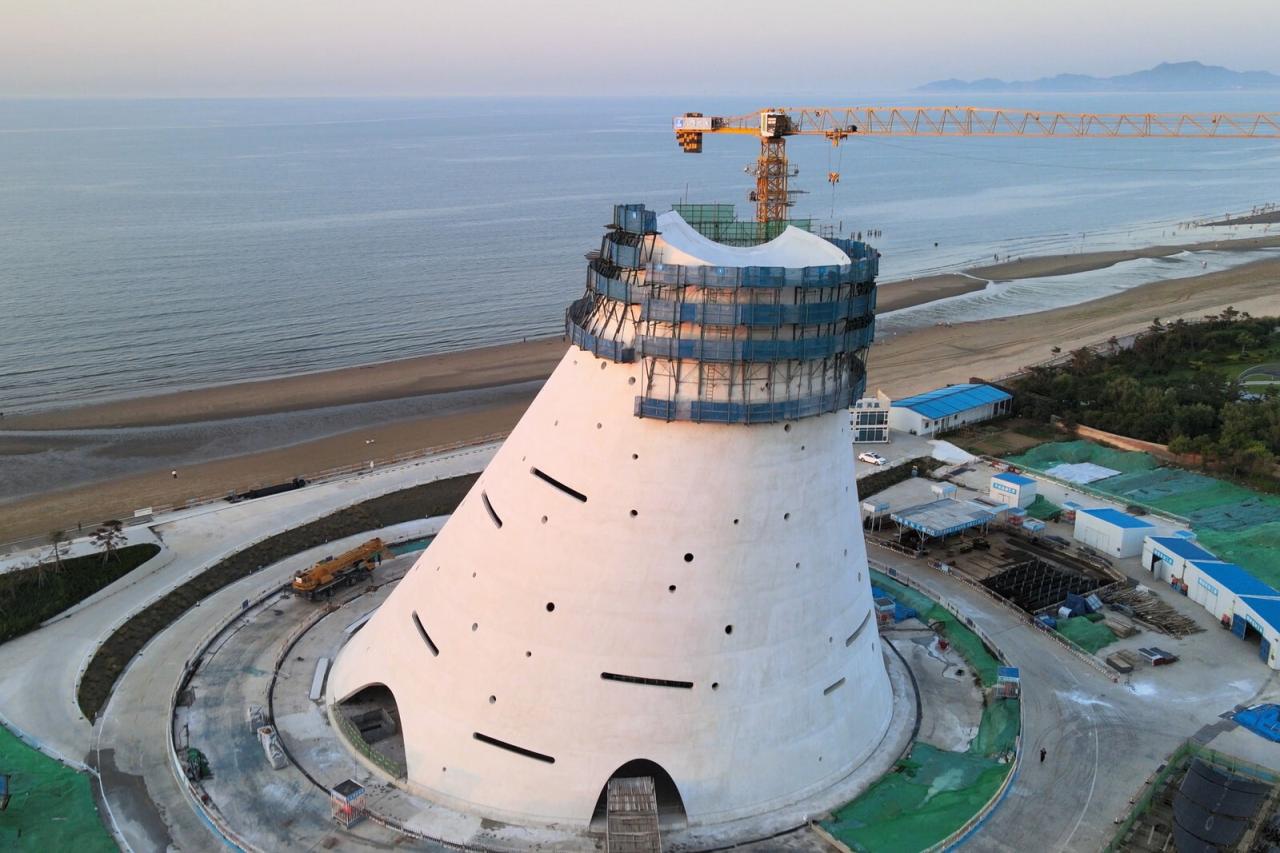
Sustainable Design and Environmental Integration
In alignment with contemporary environmental concerns, the Sun Tower incorporates several passive design strategies to minimize energy consumption:
-
A. Thermal mass is utilized to stabilize internal temperatures, reducing the need for artificial heating and cooling.
-
B. Cross-ventilation is achieved through operable vents, promoting natural airflow throughout the structure.
-
C. The chimney effect is harnessed to expel warm air, maintaining a comfortable indoor climate.
These features not only enhance the building’s sustainability but also reinforce its harmonious relationship with the surrounding environment.
Plaza Design and Astronomical Features
Surrounding the Sun Tower is a meticulously designed plaza that further emphasizes the building’s connection to celestial phenomena:
-
A. Elliptical rings radiate outward from the tower’s base, symbolizing planetary orbits and serving as pathways for visitors.
-
B. A water channel carved into the stone pavement traces the shadow of the tower during the equinoxes, visually marking the passage of time.
-
C. An outer ring features fountains that celebrate the 24 solar terms of the traditional Chinese calendar, with water jets synchronized to the sea’s tides, creating a dynamic interplay between land and sea.
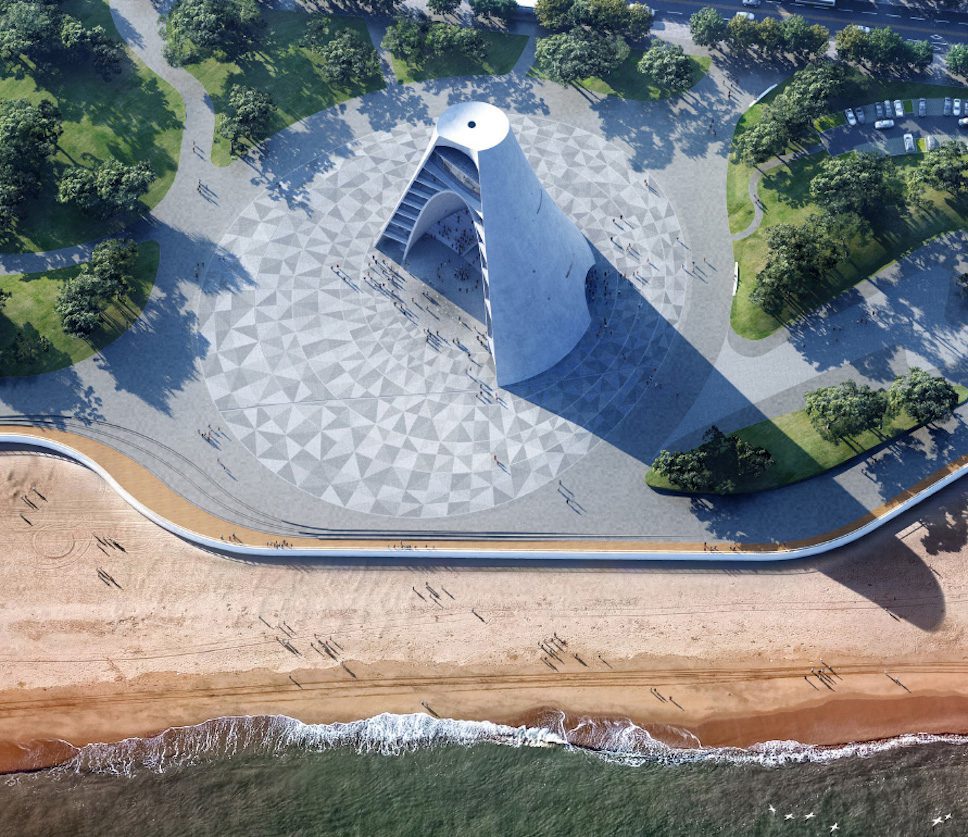
Cultural Significance and Community Impact
Since its inauguration, the Sun Tower has become an iconic landmark in Yantai, attracting both locals and tourists. Its multifaceted spaces cater to a variety of cultural activities, fostering community engagement and promoting environmental awareness. By intertwining ancient traditions with modern design, the tower serves as a reminder of humanity’s enduring relationship with nature and the cosmos.
Conclusion
The Sun Tower stands as a harmonious fusion of art, nature, and culture. Through its thoughtful design and sustainable features, it not only honors Yantai’s historical legacy but also paves the way for future architectural endeavors that prioritize ecological consciousness and cultural relevance. As a beacon of inspiration, the Sun Tower exemplifies how architecture can transcend mere functionality to become a profound expression of human connection to the natural world.

